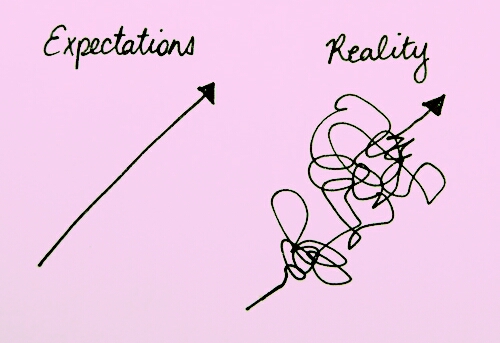
Part 3 of “How Do You Qualify Yoga?”
Sorry for the delay in posting this–full-time life happens…
Go back to the bumper sticker I mentioned in post 2 of this series, “I Love Yoga”; we have clarified, ad nauseam, Yoga is the Ecstatic State–Yoga is Union. But, even in philosophical circles, it can also mean the practices and the path that lead to the State. If I asked the driver what type of Yoga they practiced they may say, “I do Power Yoga”, “I do Vinyasa Yoga”, perhaps, “I do Ashtanga Yoga” (that is a whole other posting– Ashtanga classically denotes the eightfold-path of which posture is only one rung), or, “I do Bikram Yoga”. All of these are styles, some debatably more than others, under the umbrella of Hatha Yoga. Let’s park that for a moment and come back to Hatha…
Again, Yoga is a liberation teaching. Unquestionably, the goal of Authentic Yoga is to end the continual cycle of birth and rebirth, to realize the True Self and attain Enlightenment. I know that it’s heavy; but, it’s true.
No how are you going to do that…
The Yogis, in their infinite genius, have devises several avenues to this Penultimate Goal. They are based on your inclinations and where you are in your life. But, the goal of all is the same–YOGA.
According to Georg Feuerstein, and other scholars (there is debate of the number of paths), they are: Karma Yoga, Jnana Yoga, Bhakti Yoga, Tantra Yoga, Mantra Yoga, Hatha Yoga, and Raja Yoga (Authentic Ashtanga Yoga)–I am focusing on the “Hindu” Yoga Pantheon. We can debatably add: Buddhist Yoga and Jain Yoga, too.
I will briefly summarize each path and provide links for further reading. Notice each definition refers to the Ultimate Reality as the Goal. I would at least need to do a full posting to do each one any justice–let’s see what the future holds…
Karma Yoga: A major branch of Yoga, expounded in the first third of the Bhagavad-Gita, is the liberating path of self-transcending action. All actions are given selflessly (seva) with the understanding that all actions come from the Ultimate Reality.
Jnana Yoga: A major branch of Yoga, expounded in the second third of the Bhagavad-Gita, (and numerous other texts, such as the Upanishads) which is based on the cultivation of wisdom as the path to liberation. This wisdom is derived through direct experience of the Ultimate Reality as the Transcendental Self (atman) and through constant discernment of what is real and what is unreal.
Bhakti Yoga: A major branch of Yoga, expounded in the final third of the Bhagavad-Gita, (and numerous other texts, such as the Bhagavata Purana ) is the path of liberation through devotion. Through cultivation of this deep devotion, Bhakti, the seeker connects with the Ultimate Reality as a Supreme Being or Supreme Person.
Karma Yoga: A major branch of Yoga, expounded in the first third of the Bhagavad-Gita, is the liberating path of self-transcending action. All actions are given selflessly (seva) with the understanding that all actions come from the Ultimate Reality.
Tantra Yoga: By far the most complicated branch of traditional Yoga. Tantra focuses on the feminine energy (shakti) as the source of the Ultimate Reality. Broadly speaking Tantra can be broken down into two categories: Left-hand, which uses ritual and deities, and right-hand which is practices internally without ritual and iconography. However, as with many other traditional teachings, Tantra has often been reduced to a mere mockery of itself with focus on increasing sexual prowess.
Mantra Yoga: A major branch of Yoga, which is sometimes grouped as part of Tantra Yoga. This path uses mantras as a path to Ultimate Reality.
Hatha Yoga: A major branch of Yoga, the most renowned in the West, which is sometimes considered to be a part of Tantra. Hatha Yoga was developed by Goraksha and expounded in the Hatha Yoga Pradipika. In the HYP, one-quarter of the text is dedicated to postures (of which only four asana are described), one-quarter to cleansing and breath lengthening (shatkarma and pranayama), one-quarter to seals and locks (mudras and bandhas), and one-quarter to samadhi (the direct experience of Ultimate Reality).
Raja Yoga: A major branch of Yoga, considered to be the most complete methodology of practice. Raja Yoga is also known as Classical Yoga or Ashtanga Yoga (the eightfold path). This classic treatise of this tradition is the timeless Yoga Sutras, codified by Patanjali. The text describes the entire practice and potential experiences of meditation practice. As well as outlines the eightfold path of sadhana: yama, niyama, asana, pranayama, pratyahara, dharana, dhyana, and samadhi–which lead to direct experience of Ultimate Reality.
Despite the many branches the goal is the same. If Ultimate Reality is not the goal, it’s not Yoga. Now what is Ultimate Reality? That’s for the sadhaka to decide… See the chart at the beginning, it’s a question mark…









